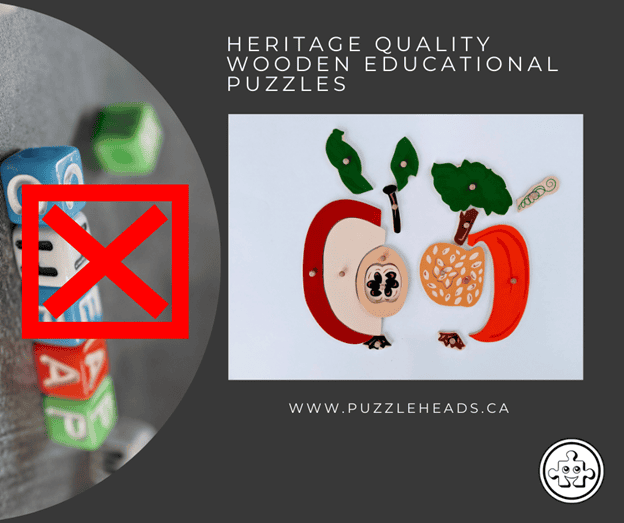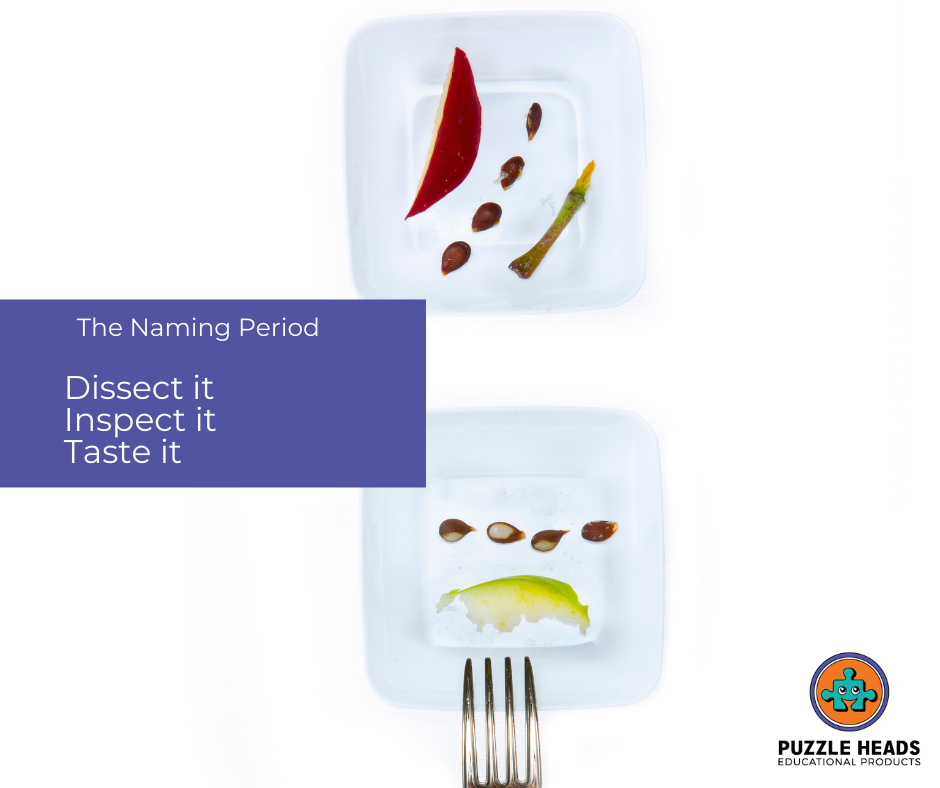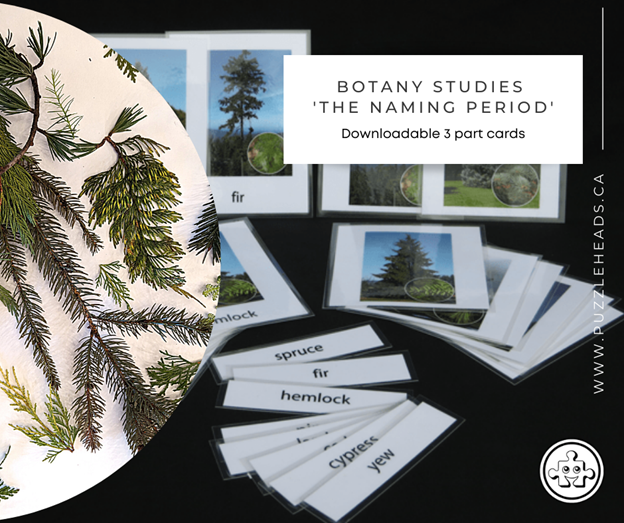Education that Fosters Curiosity
My background as a parent of two children who attended a Montessori school is the driving force behind Puzzle Heads Educational Products. The reason I chose a Montessori education for my children was largely because it encouraged the childrens’ natural sense of curiosity. Learning in a Montessori program is joyful and effortless. Children thrive. One of the key reasons for this is the Montessori teaching technique of the three period lesson.

The Montessori Three Period Lesson
The Montessori Three Period Lesson is a core teaching technique. Part 1 is called the “Naming Period”, Part 2 is the “Recognition Period” and Part 3 is the “Recall Period”. The Naming Period introduces the concept of nomenclature, or the system of naming things. I saw first hand at my children’s Montessori school how well made nomenclature driven products are related to this concept.
Montessori Inspired Learning at Home
If you don’t have a Montessori background, you aren’t alone in still wanting to give your child the confidence to be able to put names to the parts of the living world around them. In fact, in the last few years, my customer base has increasingly included parents who incorporate play based learning at home.

Are you tired of your house looking like a plastic toy landfill? Montessori materials are typically made of wood or other natural materials. In addition, Montessori materials have immense value in any learning environment. For example, you can easily adopt the three period lesson at home. Read on to see how to do this for a unit study on the apple.
The Naming Period
I will focus on the first period or Naming Period of the three period lesson. In this stage the parent or teacher simply presents the vocabulary of the object or concept. We observe that a beautiful, key focus here is that there is no set time frame for when this period ends. Indeed, this period may be the longest of the three. This allows the child to experience the concept, material, or vocabulary at their own pace and only move on to the next step when they are ready.
Follow The Child
By the way, this is a great example of another key Montessori philosophy called “follow the child”. There is no pressure, no schedule and no time limit. You don’t want to risk extinguishing the wonder and joy of learning. A child needs to explore their world on their own terms. The curiosity to learn about something should be intrinsic. The Montessori guide or parent should not direct the child down this path, but rather guide them. Each part of the three period lesson is handled with the same care and intuition. Then, at the end of the third period, the child will be confident and secure using the new skill they’ve acquired.

Apple Three Period Lesson
Many children at 2 or 3 years old are often drawn to botany, since they are surrounded by trees, grass, gardens and plants on a daily basis.
Why not create an apple three period lesson for a botany unit study, for example. Start by grabbing a variety of local apples from your favourite farmers market, orchard or grocery store. Invite inquiry about how the apples might have different coloured skin, flesh, textures and are different sizes. Taste? Yes, absolutely taste each one and describe the flavours to one another.
The children might enjoy washing, peeling and cutting the apples to make a simple sauce. In a Montessori classroom this type of activity is a common example of a lesson in Practical Life. Take this opportunity to introduce the nomenclature of the apple in the Naming Period: Skin, Flesh, Core, Ovary, Seeds, Leaf, Blossom End (Calyx) and Stem. Finally, name each part one at a time while examining the actual piece from the apple.

A quick note here – whenever setting things out, do so from left to right, top to bottom, the same way that you write. Subtle movements like this mirror the left to right movement in reading and writing. The Montessori method has many ways to embed hidden features like this, which serve to reinforce future concepts. In this case you are setting the stage for the child when they begin to read and write themselves.
Montessori Inspired Puzzles
The Puzzle Heads wooden apple puzzle draws on these Montessori nomenclature principles. The puzzle is cut into the shapes that correspond to the parts of the apple. Montessori puzzles are typically cut in this manner. They are not cut in the usual jigsaw puzzle shapes.

In addition, the apple nomenclature bundle is a digital download that you can print at home. This download includes nomenclature cards, control charts and a colouring booklet. Nomenclature cards (also called 3 part cards) are the core material for vocabulary acquisition that begins in the Naming Period. With these materials your children can practice what they are learning in your apple three period lesson.
Similarly, our pumpkin nomenclature puzzle is designed with these same principles in mind. It too has a corresponding digital download. Puzzle Heads has many other nomenclature puzzles and materials, including conifer 3-part cards inspired by the Pacific Northwest.

Features in Montessori Materials
All Montessori materials are designed and constructed with quality in mind. Many materials have hidden features to support various components of the philosophy. Learning what some of these features and principles are will help you evaluate and decide on what to purchase.
Our puzzles are made from baltic birch plywood, not pressboard, so you can be confident they won’t fray on the corners or wear out. The pieces have pegs, which promote the fine motor development of the pincer grip. The pincer grip is a necessary precursor for learning to hold a pencil in preparation for writing.
Maria Montessori designed the classroom environment specifically to support learning through repetition and practice. Beginning with the Naming Period of the 3 period lesson, children learn to observe parts of plants that they may not see when observing them from the outside. Yet, by using puzzles, they intuitively learn that these parts form a whole.
Try putting together your own unit study on a subject area that interests your child. Let us know how you make out in the comments below!




